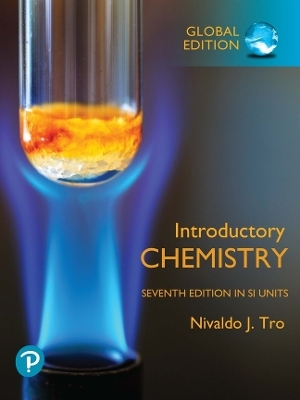
Laser Isotope Separation in Atomic Vapor
Wiley-VCH Verlag GmbH (Hersteller)
9783527608942 (ISBN)
- Keine Verlagsinformationen verfügbar
- Artikel merken
Written by leading Russian scientists, including Nobel laureate, A.M. Prokhorov (1916-2002), this first book on this important technology allows an understanding of the physics of atomic vapor laser isotope separation and new photochemical methods of laser isotope separation. One entire chapter is devoted to chemical reactions of atoms in excited states, while further chapters deal with the separation of isotopes by one photon isotope-selective and coherent isotope-selective two photon excitation of atoms. A final chapter looks at the prospects for the industrial production of isotope products by laser isotope separation. The whole is rounded off by six appendices.
Among the authors is A.M. Prokhorov (1916-2002) who received the Nobel Price 1964 together with C.H. Townes and N.G. Basov for his "fundamental work in the field of quantum electronics, which has led to the construction of oscillators and amplifiers based on the maser-laser principle". All other auhtors: Bokhan Peter Artemovich, Buchanov Vladimir Vasiljevich+, Zakrevskii Dmitry Eduardovich, Kazaryan Mishik Airazatovich++, Kalugin Michael Mihajlovich#, Prokhorov Alexander Mihajlovich, Fateyev Nikolay Vasiljevich Institute of Semiconductor Physics, Russian Academy of Sciences, Novosibirsk, Russia +Institute of Chemical Physics, Russian Academy of Sciences, Moscow, Russia #Scanning Laser Company, St. Petersburg, Russia ++P.N. Lebedev Physical Institure (LPI), Russian Academy of Sciences (RAS), Moscow, Russia
1 Laser Isotope Separation in Atomic Vapors.1.1 Introduction.1.2 Brief Description of the AVLIS Process as Applied to Uranium.1.3 General Description of the AVLIS Process.1.4 Theoretical Description of the AVLIS Process.1.4.1 Theoretical Description of the Method for Incoherent Interaction Between Radiation and Atoms.1.4.2 Features of Coherent Two-Photon Excitation.1.4.3 Evaporation of Separated Material, Collimation of an Atomic Beam, and Ion Extraction.1.5 Photochemical Laser Isotope Separation in Atomic Vapors.1.6 Other Methods of Isotope Separation.2 Laser Technique for Isotope Separation.2.1 Introduction.2.2 General Requirements for a Laser System in the AVLIS Process.2.3 Laser Complex.2.3.1 Pumping Lasers.2.3.2 Tunable Lasers.2.4 Complexes for Laser Isotope Separation.3 Chemical Reactions of Atoms in Excited States.3.1 General View of Photochemical Reactions.3.2 Experimental Study of Photochemical Reactions Between Atoms and Molecules.3.3 Collisional Quenching of Excited Atomic States by Molecules.3.4 Resonance Transfer of Excitation in Collisions.3.5 Collisional Processes with Rydberg Atoms.3.6 Isotope Exchange Reactions.3.7 Radical Reactions in Collisions.4 Isotope Separation by Single-Photon Isotope-Selective Excitation of Atom.4.1 Description of the Method.4.2 Mathematical Model of the Method.4.3 Calculation Results on Isotope-Selective Excitation of Zinc Atoms.4.3.1 Transversal Gas Circulation.4.3.2 Longitudinal Gas Circulation.4.4 Output Parameters Versus the Detuning of Radiation Frequency.4.5 Influence of the Radiation Line Profile on Output Characteristics of the Separation Process.4.6 Experiments on Laser Separation of Zn Isotopes by the Photochemical Method.4.7 Experiments on Laser Separation of Rubidium Isotopes by the Photochemical Method.5 Coherent Isotope-Selective Two-Photon Excitation of Atoms.5.1 Brief Description of Two-Photon Excitation and the Mathematical Model.5.2 Two-Photon Excitation of Led Atoms.5.3 Two-Photon Excitation of Boron and Silica Atoms.5.4 Photochemical Separation of Zinc Isotopes by Means of the Two-Photon Excitation.5.4.1 Description of the Method.5.4.2 Polarization of Radiation.5.4.3 Mathematical Model of Cascade Superluminescence.5.4.4 Calculation Results.5.4.5 Experimental Results.5.5 Zinc Isotope Separation by Evaporating Material from Chamber Walls.5.5.1 Problem Statement.5.5.2 Physical Analysis.5.5.3 Calculation Results and Their Analysis.5.5.4 Influence of Diffusion Processes on the Selectivity of Isotope Separation.6 Prospects for Industrial Isotope Production by Methods of Laser Isotope Separation.6.1 Microelectronics and Optoelectronics.6.2 Nuclear Fuel Cycle.6.3 Medicine and Biology.7 Appendix A: Mathematical Description of the Processes Based on Kinetic Equations.8 Appendix B: Operation Features of Copper-Vapor Laser Complexes.8.1 Specificity of Creating the Complexes of Copper-Vapor Lasers.8.1.1 Specificity of Measuring Laser Radiation Parameters in CVL Complexes.9 Appendix C: Physical and Technical Problems of Increasing the Power of Copper-Vapor Lasers.10 Appendix D: Neutron Transmutation Doping of Silica.11 Appendix E: Employment of Boron Isotopes in Microelectronics.12 Appendix F: Employment of Boron in Nuclear Fuel Cycle Equipment.References.Subject Index.
| Erscheint lt. Verlag | 28.8.2006 |
|---|---|
| Verlagsort | Weinheim |
| Sprache | englisch |
| Maße | 184 x 246 mm |
| Gewicht | 501 g |
| Themenwelt | Naturwissenschaften ► Chemie |
| Naturwissenschaften ► Physik / Astronomie | |
| Technik ► Elektrotechnik / Energietechnik | |
| ISBN-13 | 9783527608942 / 9783527608942 |
| Zustand | Neuware |
| Informationen gemäß Produktsicherheitsverordnung (GPSR) | |
| Haben Sie eine Frage zum Produkt? |
aus dem Bereich


